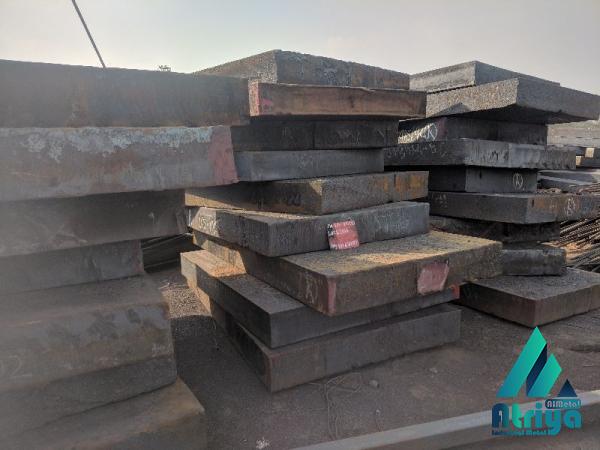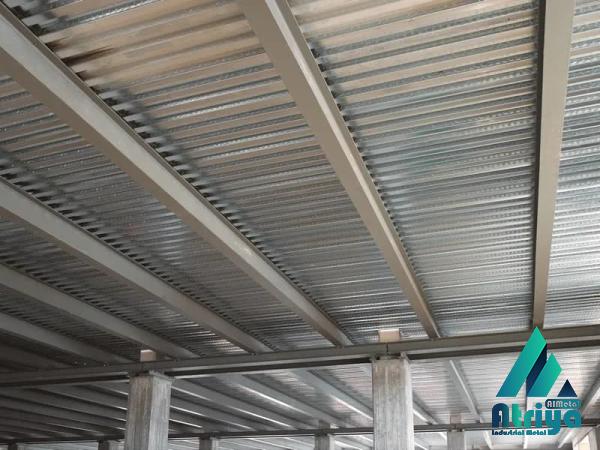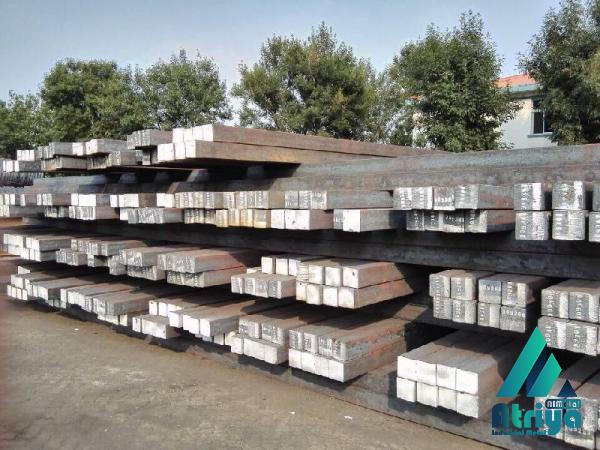Steel slabs play a crucial role in the global steel industry, and Russia is one of the key players in the production and export of these slabs. Steel slabs are semi-finished products that serve as the primary input material for the production of various steel products, including hot-rolled coils, cold-rolled coils, and plates. With its abundant natural resources and a well-developed steel industry, Russia has emerged as a major supplier of steel slabs to domestic and international markets. In this article, we will delve into the specifics of the steel slab industry in Russia, including its production capacity, export potential, key players, and market trends. 1. Overview of the Steel Slab Industry in Russia Russia is known for its vast reserves of iron ore and coal, which are essential raw materials for the production of steel slabs. Moreover, the country’s long history in steel manufacturing has led to the establishment of numerous steel plants, making Russia one of the largest producers of steel slabs in the world. Some of the major steel producers in Russia include Severstal, Evraz, Novolipetsk Steel (NLMK), and Magnitogorsk Iron and Steel Works (MMK).
iron
 2. Production Capacity of Steel Slabs in Russia Russia has a substantial production capacity for steel slabs, enabling it to meet both domestic demand and export requirements. According to industry sources, the country produced around 38 million metric tons of steel slabs in 2019. Severstal, one of Russia’s leading steel producers, alone accounted for approximately 7 million metric tons of steel slab production in the same year. The production of steel slabs in Russia is conducted through the primary steelmaking process in integrated steel plants, which involve the use of blast furnaces and basic oxygen furnaces. 3. Role of Russian Steel Slab Exports Due to its ample production capacity, Russia is also a significant exporter of steel slabs. The country exports the majority of its steel slabs to markets in Asia, Europe, and the Middle East. However, the share of steel slab exports in Russia’s total steel exports is relatively smaller compared to other steel products like hot-rolled coils and long products. This can be attributed to the fact that steel slabs are primary inputs and are further processed in the recipient countries to produce finished steel products. The main destinations for Russian steel slab exports include Turkey, South Korea, China, and the European Union. 4. Key Players in the Russian Steel Slab Industry As mentioned earlier, several prominent steel producers operate in Russia and contribute significantly to the steel slab industry.
2. Production Capacity of Steel Slabs in Russia Russia has a substantial production capacity for steel slabs, enabling it to meet both domestic demand and export requirements. According to industry sources, the country produced around 38 million metric tons of steel slabs in 2019. Severstal, one of Russia’s leading steel producers, alone accounted for approximately 7 million metric tons of steel slab production in the same year. The production of steel slabs in Russia is conducted through the primary steelmaking process in integrated steel plants, which involve the use of blast furnaces and basic oxygen furnaces. 3. Role of Russian Steel Slab Exports Due to its ample production capacity, Russia is also a significant exporter of steel slabs. The country exports the majority of its steel slabs to markets in Asia, Europe, and the Middle East. However, the share of steel slab exports in Russia’s total steel exports is relatively smaller compared to other steel products like hot-rolled coils and long products. This can be attributed to the fact that steel slabs are primary inputs and are further processed in the recipient countries to produce finished steel products. The main destinations for Russian steel slab exports include Turkey, South Korea, China, and the European Union. 4. Key Players in the Russian Steel Slab Industry As mentioned earlier, several prominent steel producers operate in Russia and contribute significantly to the steel slab industry.
Specifications of iron
 Severstal, headquartered in Cherepovets, is one of the leading players in the Russian steel market. The company operates integrated steel plants and possesses a sizable steel slab production capacity. Evraz, another major player, has multiple steel plants across Russia and focuses on both steel slab production and downstream steel processing. NLMK and MMK are also significant contributors to the Russian steel slab industry, with their own steelmaking facilities and export capabilities. 5. Market Trends and Challenges The Russian steel slab industry is subject to various market trends and challenges that shape its growth and competitiveness. One notable trend is the increasing demand for high-quality steel slabs in international markets, particularly in the automotive, construction, and manufacturing sectors. This shift towards higher quality slabs requires Russian steel producers to invest in advanced technologies and process improvements to meet the stringent requirements of global customers. Another challenge faced by the Russian steel slab industry is the volatility of global steel prices. Steel prices are influenced by numerous factors, including global economic conditions, trade policies, and raw material costs. Fluctuations in steel prices can impact the profitability of steel producers and influence investment decisions. Therefore, Russian steel companies need to closely monitor global market dynamics and adjust their production and export strategies accordingly.
Severstal, headquartered in Cherepovets, is one of the leading players in the Russian steel market. The company operates integrated steel plants and possesses a sizable steel slab production capacity. Evraz, another major player, has multiple steel plants across Russia and focuses on both steel slab production and downstream steel processing. NLMK and MMK are also significant contributors to the Russian steel slab industry, with their own steelmaking facilities and export capabilities. 5. Market Trends and Challenges The Russian steel slab industry is subject to various market trends and challenges that shape its growth and competitiveness. One notable trend is the increasing demand for high-quality steel slabs in international markets, particularly in the automotive, construction, and manufacturing sectors. This shift towards higher quality slabs requires Russian steel producers to invest in advanced technologies and process improvements to meet the stringent requirements of global customers. Another challenge faced by the Russian steel slab industry is the volatility of global steel prices. Steel prices are influenced by numerous factors, including global economic conditions, trade policies, and raw material costs. Fluctuations in steel prices can impact the profitability of steel producers and influence investment decisions. Therefore, Russian steel companies need to closely monitor global market dynamics and adjust their production and export strategies accordingly.
buy iron
 Furthermore, environmental regulations and sustainability considerations are increasingly important factors in the steel industry. Steelmakers in Russia are required to comply with environmental standards and adopt cleaner production technologies to reduce their carbon footprint. This not only helps in meeting regulatory obligations but also enhances the industry’s reputation and market competitiveness. 6. Government Initiatives and Outlook The Russian government recognizes the strategic importance of the steel industry and provides support through various initiatives and policies. These include infrastructure development projects, such as the modernization of existing steel plants and the construction of new facilities. Additionally, the government aims to promote domestic consumption of steel and reduce the country’s reliance on steel exports. The implementation of import substitution policies and the support of domestic manufacturing sectors contribute to the growth of the steel slab industry within the country. In conclusion, Russia holds a significant position in the global steel slab market, thanks to its substantial production capacity, abundant raw materials, and a well-developed steel industry. The country’s steel producers play a vital role in meeting domestic demand and exporting to international markets. However, the industry faces various challenges, including market volatility, evolving customer demands, and environmental considerations. Nevertheless, with government support and proactive measures, the Russian steel slab industry is poised to maintain its competitiveness and contribute to the country’s overall economic growth.
Furthermore, environmental regulations and sustainability considerations are increasingly important factors in the steel industry. Steelmakers in Russia are required to comply with environmental standards and adopt cleaner production technologies to reduce their carbon footprint. This not only helps in meeting regulatory obligations but also enhances the industry’s reputation and market competitiveness. 6. Government Initiatives and Outlook The Russian government recognizes the strategic importance of the steel industry and provides support through various initiatives and policies. These include infrastructure development projects, such as the modernization of existing steel plants and the construction of new facilities. Additionally, the government aims to promote domestic consumption of steel and reduce the country’s reliance on steel exports. The implementation of import substitution policies and the support of domestic manufacturing sectors contribute to the growth of the steel slab industry within the country. In conclusion, Russia holds a significant position in the global steel slab market, thanks to its substantial production capacity, abundant raw materials, and a well-developed steel industry. The country’s steel producers play a vital role in meeting domestic demand and exporting to international markets. However, the industry faces various challenges, including market volatility, evolving customer demands, and environmental considerations. Nevertheless, with government support and proactive measures, the Russian steel slab industry is poised to maintain its competitiveness and contribute to the country’s overall economic growth.











Your comment submitted.